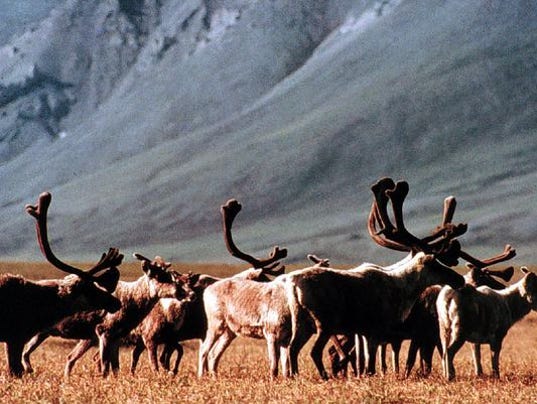Tennessean
Why drilling for oil in the Arctic is pointless
Whitfield Bailey Published July 31, 2017
(Photo: U.S. Fish and Wildlife Service via AP)
Story Highlights
- Opinion: Trump’s proposal suggests Arctic National Wildlife Refuge could be opened for oil drilling.
- Whitfield Bailey resides in Knoxville.
As both a fiscal conservative and someone who cares deeply about protecting our nation’s natural resources, I was appalled to see a certain provision tucked away in President Trump’s budget proposal: an unwarranted sneak attack on one of our nation’s most prized units of public land, the Arctic National Wildlife Refuge.
The Arctic Refuge in northern Alaska is the crown jewel of America’s National Wildlife Refuge System and is an internationally recognized wildlife haven renowned for its biodiversity. Fifty species of mammals and more than 200 species of migratory birds from all 50 states, like the yellow-rumped warbler, call this refuge home. The refuge remains one of the largest pristine ecosystems in the world.
From a fiscal point of view, the proposal to desecrate the Coastal Plain of the refuge with a web of destructive pipelines and drills makes little sense. Alaska politicians have been pushing this misguided attack on the refuge because they believe that drilling would lead to a windfall for Alaska. But this supposed revenue is highly theoretical, if not downright dubious.
In 1985, Chevron spent $40 million to drill three miles below the refuge to see if there was oil there. The results of this test have been kept secret ever since, suggesting nothing too exciting was found.
In the 1980s, oil prices were skyrocketing and Americans were eager to drill. But we are in a different position now. Oil and gas prices have been falling for years as the United States moves towards energy independence. New drilling technologies have fueled the Shale Revolution and allowed us to tap into previously inaccessible oil and natural gas fields. Additionally, the renewable energy industry is experiencing a boom in production, intense job growth, and rapid decreases in costs. President Trump’s own budget acknowledges this new state of affairs, since it proposes selling off half of the Strategic Petroleum Reserve, further underscoring the fact that the United States is not as reliant on foreign oil today.
If we are willing to sell off half of the SPR, then surely we do not need to drill in the Arctic Refuge.
The environmental value of the refuge is immeasurable, and drilling there would be incompatible with the mission of the refuge to protect wildlife. Proponents of drilling argue that oil companies would only drill in a few square miles of the Coastal Plain. But this argument is specious, because a drill site that only takes up a few square miles depends on a spider web of pipelines, pads, roads, and other infrastructure – and an oil leak from even a small pipeline can have devastating effects on the fragile ecosystem of the pristine Coastal Plain.
The Coastal Plain is home to grizzlies, muskoxen, wolverines, and arctic foxes, and is an important denning site for polar bears. It is home to the 180,000-strong Porcupine caribou herd, one of the largest herds in North America. This herd is especially important for the native Gwich’in people who live in the area.
The Gwich’in rely on the caribou to maintain their centuries-old subsistence way of life and cultural identity. This is the reason the Gwich’in refer to the Coastal Plain as “the sacred place where life begins.” It is not just an economic and environmental issue – it is also a human rights issue.
Congress should reject President Trump’s dangerous budget proposal – for the sake of wildlife, for the Gwich’in people, and for basic economic sense.
Whitfield Bailey resides in Knoxville.

